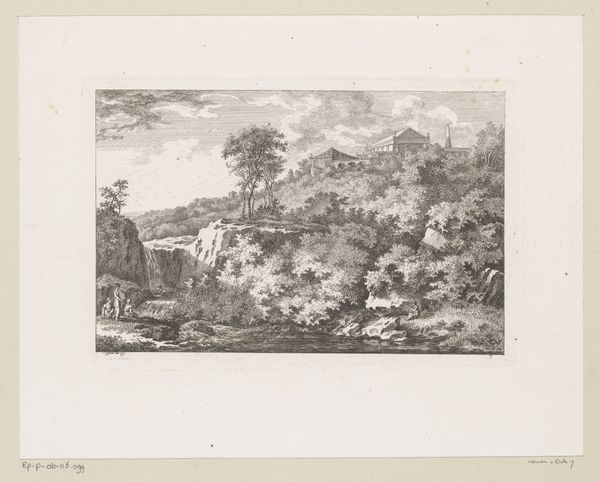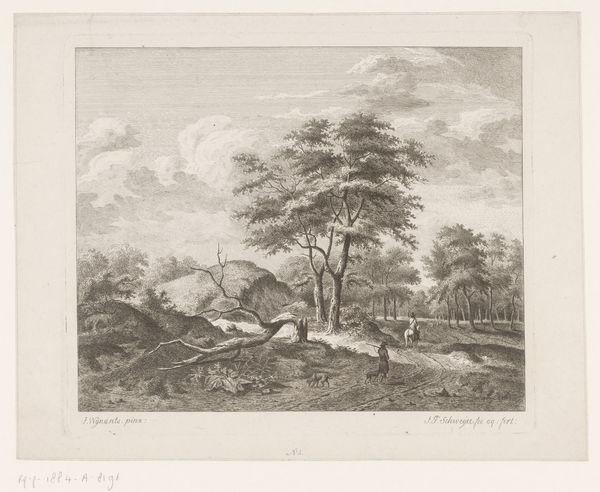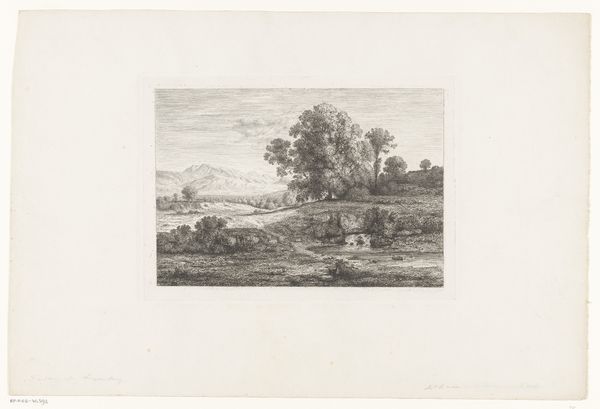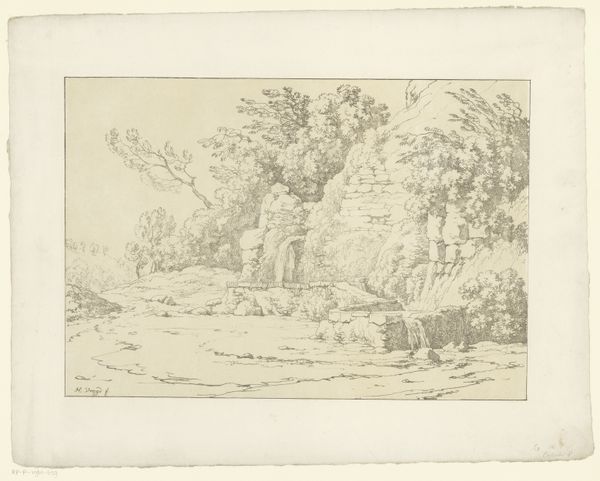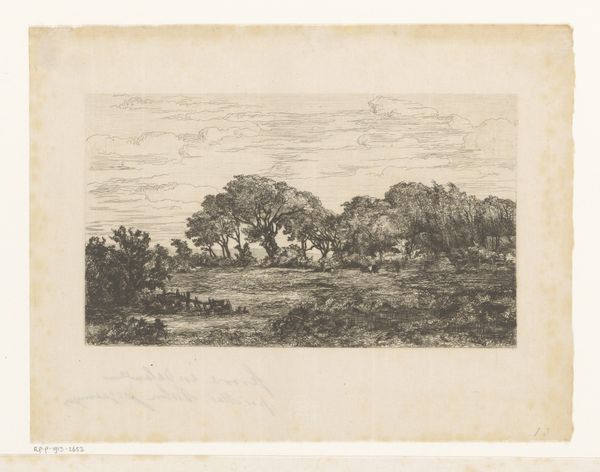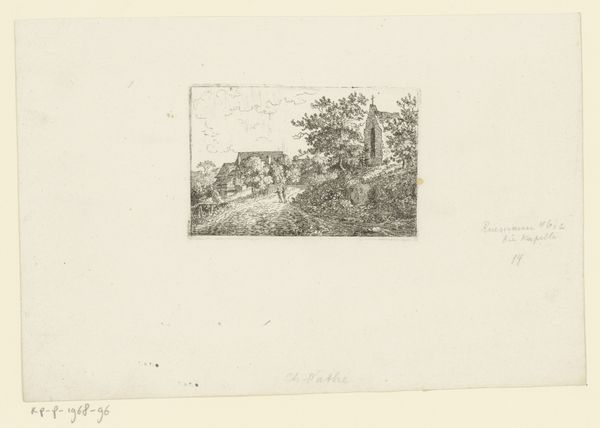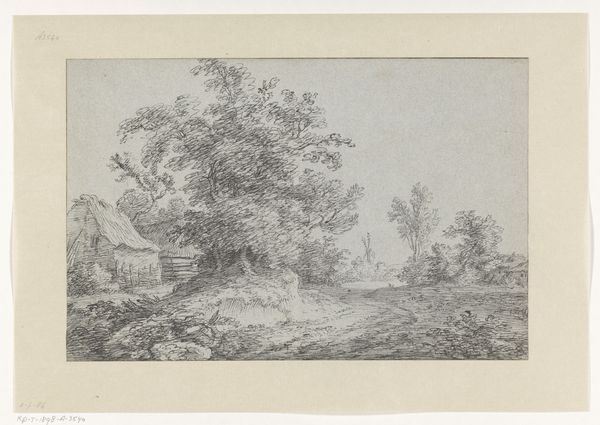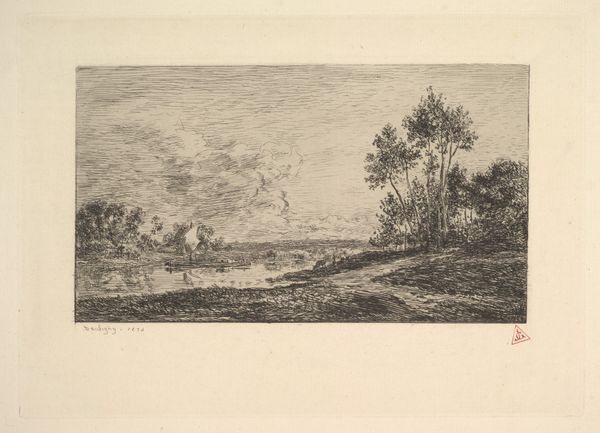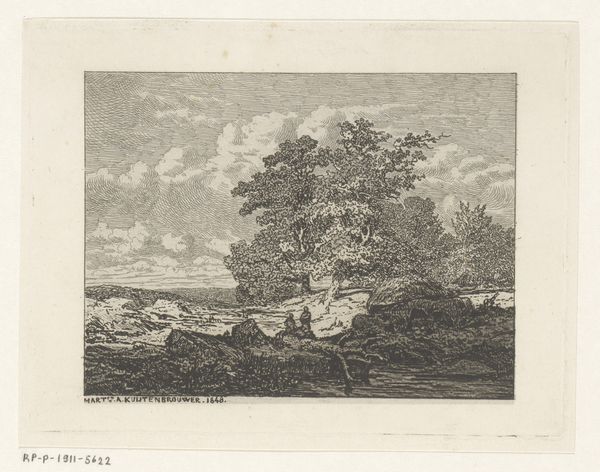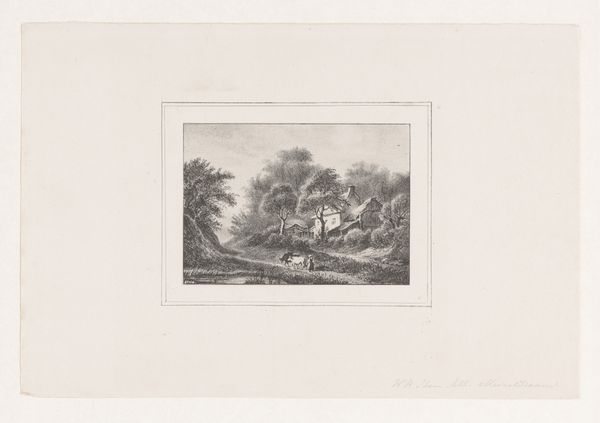
#
light pencil work
#
pen sketch
#
pencil sketch
#
old engraving style
#
etching
#
ink drawing experimentation
#
pen-ink sketch
#
pen work
#
sketchbook drawing
#
pencil work
Dimensions: height 218 mm, width 237 mm
Copyright: Rijks Museum: Open Domain
Curator: Let’s take a look at Johann Christian Reinhart's "Landschap met zwijnenhoeder," created in 1782. What are your initial impressions? Editor: There's something about the density of marks creating these wispy lines that creates such texture and volume. I can feel the grit under the animals feet; there's a haptic quality to this work. Curator: Indeed. Reinhart, a contemporary of the burgeoning Romantic movement, created this etching to depict an ordinary scene of a landscape dotted by houses, foliage, humans and animals—but also engages with the era’s shifting social views on nature and labor. We often see depictions of peasants in idyllic harmony with the land in similar artworks. Editor: That's certainly a factor, but I see the labour itself heavily coded in the process. Just think about the process behind such a sketch: the biting of the acid onto the plate and the pressure that is placed onto the paper; labour is inherently embedded within this piece's creation. Curator: Yes, etching itself was becoming an increasingly popular medium precisely because it allowed for broader dissemination of imagery. It also became a valuable tool for artists who were outside of the elite academy circles in many respects, democratizing the consumption of artwork.. Editor: True, the relatively ease and inexpensive process made prints much more accessible. But don't you also see the ways this piece obscures these facts? It's printed on nice paper and mounted properly in an art space -- hardly democratic now. Curator: That’s a fair point. Its placement within an institution definitely reframes it. And there's that tension—wanting to capture the essence of rural life, and make art more widespread but that ultimately only reaches a certain audience because of socio-economic realities and art institutions.. Editor: These contradictions often come up whenever artists grapple with new production models. Considering how the meaning of the image shifts depending on how the art is created, and how the final piece enters our lives is always a balancing act. Curator: A worthwhile balance to consider. Reinhart’s delicate "Landschap met zwijnenhoeder," in its rendering and method of production opens up fascinating dialogues about art and labor, consumption, and cultural perspectives in 18th-century Europe that resonate still. Editor: Yes. I'll certainly be thinking about how such art is produced and viewed moving forward in new ways.
Comments
No comments
Be the first to comment and join the conversation on the ultimate creative platform.
